Missing teeth should always be replaced to avoid the following consequences:
Losing teeth significantly affects your ability to chew and eat your favorite foods. Often, people change to softer diet or avoid chewing on one side or the other to compensate for this loss that may lead to TMJ disorder or digestion problem.

Tooth loss, especially in the upper front area of your mouth also known as the smile or aesthetic zone, compromises your smile & confidence . People with missing teeth or aesthetically unpleasing teeth often cover their mouth when talking or smiling. It can also affect one’s speaking.

Following teeth loss, the remaining teeth have to carry the ‘load’ during your chewing. The excessive forces can result in chipping, fractures, or potential gum disease with loss of bone. Once the bite balance has been compromised by tooth loss, it becomes increasingly worse as the other teeth suffer such damage and begin to shift. To prevent bite misbalance replaces the missing teeth by its specialist as early as possible.

Following tooth loss, the supporting jaw bone undergoes significant remodeling and shrinkage. This will result in defects that are unsightly, difficult to clean, and difficult to correct later. This can easily be prevented by replacing the missing teeth with implants early or by natural looking CAD-CAM crown & bridge.
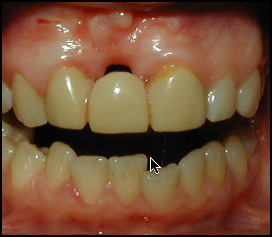
Tooth loss causes shifting or moving of adjacent and opposing teeth. The back teeth begin to tilt forward and the opposing teeth start shifting up or down. All of this results in malocclusion bite collapse (poor bite), increase in teeth fractures and increased bone loss (periodontal disease). Once teeth have shifted, correction is difficult and costly. It is best to replace missing teeth before such changes occur. Consult your Prosthodontist for proper method to restore the missing teeth as early as possible.
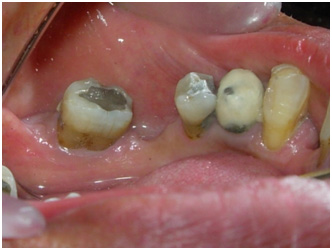
Loss of many teeth in the back results in ‘bite collapse’. The jaw then over closes putting more pressure on the front teeth causing them to flare out. Facial wrinkles develop around the mouth and the lips start to sink inward (This is the classic tooth-less aging person look). Some people also begin to develop facial pain and TMJ problems. These are serious permanent changes which can be easily prevented by replacing missing teeth in a timely fashion.

Having a healthy mouth and nice smile greatly contributes to one’s sense of self-esteem and comfort in social settings. We have met many patients whose lives greatly suffered from oral health negligence. Overall quality of life is enhanced with replacement of teeth that look, feel and function like natural teeth.

Whether you are replacing a tooth that is already missing or needs to be extracted, or replacing an old defective bridge, dental implants offer the best viable option for long term success.
Conventional dental bridges are usually (but not always ) not recommended for replacement of missing teeth due to many reasons mainly irreversible damage to the adjacent supporting teeth.
Cost difference between a dental bridge and dental implant. Six reasons why your dentist may recommend a bridge over dental implants.
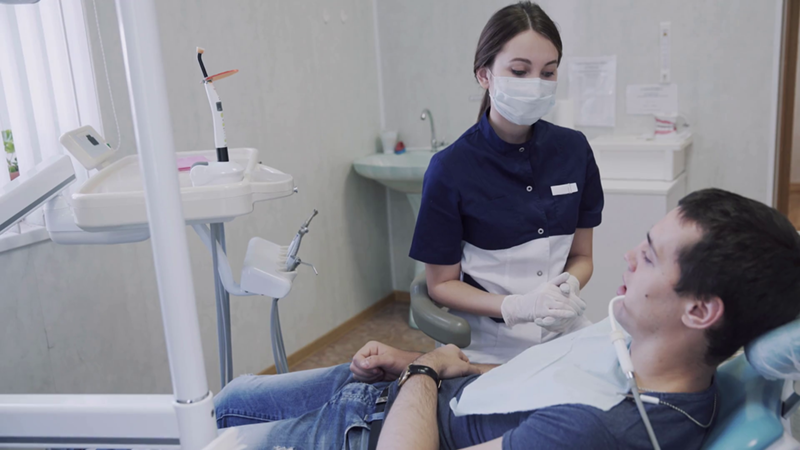
In todays dentistry dental implants clearly offer the best replacement option of single,multiple or all missing teeth. Consider the following documented studies:
By replacing the entire tooth, including the root, dental implant replicate the natural teeth, with a strong, stable foundation that gives natural appearance and allows comfortable biting and chewing. In addition, nothing in the mouth looks or feels artificial.
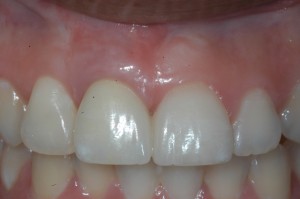
Implants preserve the integrity of the oro-facial structures. By preventing the bone resorption that would normally occur with the loss of teeth, the facial structures remain intact. This is particularly important when all of the teeth are missing, as the lower one-third of the face collapses if implants are not placed to preserve the bone.
Your smile is improved when your missing/replacement teeth look more like the natural teeth. Even when only one tooth is missing, dental implant is the first line of treatment for long term aesthetics and chewing. Only due tocertain anatomical or economical or adjacent teeth problem a traditional tooth-supported bridge is indicated to replace the missing teeth.
When replacing a missing teeth With dental implants, adjacent teeth are not compromised . Tooth replacement with traditional tooth-supported bridges requires grinding down the teeth adjacent to the missing tooth/teeth, so that the bridge can be cemented onto them. Replacing missing teeth with implant supported crowns/bridges does not involve the adjacent natural teeth, so they are not compromised or damaged.
Overall quality of life is enhanced with replacement of missing teeth that look, feel, and function like natural teeth. With implant supported replacement teeth, the appearance of the smile is more natural, and the teeth function more like natural teeth. The result is increased comfort and confidence when smiling, speaking, and eating. If removable dentures are replaced with implant supported teeth or implant overdenture the overall enhancement in quality of life is even more significant, with an ability to eat all types of foods, elimination of digestive problems, and improved speech, comfort and appearance.
It is much easier to care for an implant supported crown, which can be cleaned like a natural tooth. It is also more convenient to clean a full set of implant supported replacement teeth (Implant supported overdenture ) than a traditional denture.
Since implants preserve bone, thereby preventing deterioration of the facial structures,as a result facial appearance is improved. Collapse of the lower one-third of the face caused by complete tooth loss can be visually corrected and the remaining bone preserved. The appearance of wrinkles around the mouth or premature aging is eliminated by implant supported fixed or removable teeth.
Many of the people who now enjoy the benefits of implant supported fixed or removable teeth state that their self esteem and self confidence have been restored as a result of improved appearance, function, comfort, and health.
Wearing an upper traditional denture can prevent someone from really tasting food, as the roof of the mouth is covered. With implant supported replacement teeth, it is not necessary to cover the roof of the mouth, so it is possible to enjoy the taste of foods.
Dental implants are made of completely biologically compatible “bone- friendly” titanium material, that naturally heals and integrates with the surrounding tissues. Because titanium is accepted so well by the human body, it is also used for orthopedic implants, such as hip and knee replacements. Dental implants are very safe and predictable, and complications can be avoided when performed by a trained, skillful, and experienced prosthodontist using specialized instruments and techniques. Dr. shahi a Prosthodontist specializes in replacement of missing teeth by dental implant has performed it successfully on many patients. Our dental clinic is designed and equipped exclusively for dental implant procedures, and the team assisting Dr. shahi is trained specifically for them. Methodical, exacting, and detailed protocols are followed strictly to make sure every patient has a pleasant experience.
Dental implants should not be done until the patient has completed their growth age, typically age 16 to 17 in females and 18 to 21 in males. Some older patients fear their jaw bone is too weak. The fact is dental implants are equally successful and have an excellent prognosis in any adult patient. No one is too old for dental implants, and for many, improvement in chewing and aesthetics adds confidence and quality to their lives. The fundamental point is whether the patient will be able to tolerate the procedure and give required amount of time and visit at old age or not.
Osteoporosis usually does not affect the health of the jaw bone, and dental implants are equally effective and successful.
Rejection does not occur with dental implants. nowdays overall success rate for dental implants is 99% with almost 50 years of clinical research to back them up provided you should be under the hand of its specialist. Because implants are made of biologically compatible “bone-friendly” titanium material, they naturally heal and integrate with the surrounding tissues.
The jaw bone undergoes significant shrinkage following the third month after tooth loss and can continue up to 12 months. If the extraction site was not grafted at the time, there might be an inadequate amount of bone for implant placement in future. Bone grafting is indicated in few caes otherwise the other alternative prosthetic treatment is indicated.
Studies show an increased risk of complications if patients smoke (more than 20 cigarettes/day) during the initial phases of implant healing. However, once healed and integrated, there is good long term success. It is advised to stop or at least reduced (less than 10/day) smoking for 2-3 months following dental implant placement for optimal results.
implants are quite safe and predictable and complications can be avoided when the procedure is performed by a trained, skillful, and experienced Prosthodontist using specialized instruments and techniques. Dr. shahi specializes in these procedures and has performed them successfully on many patients since 2007. Our clinic – 3D Dental & Implant Clinic is designed and equipped for such procedures. Methodical, exacting, and detailed protocols are followed strictly to make sure every patient feel a remarkable experience.
Dental implants are made of biologically compatible “bone-friendly” titanium material that naturally heals and integrates with the surrounding tissues. Because titanium is accepted so well by the human body, it is also used for orthopedic implants, such as hip and knee replacements.
Teeth replacement with dental implants requires the collaborative efforts of a surgeon and a restorative dentist and dental laboratory. Dental implant supported prosthodontics is a highly skilled discipline, best performed by Prosthodontist who are well trained and perform this procedure routinely. Dr.Harendra shahi specializes in replacement of missing teeth by dental implant and has performed it successfully on thousands of patients. Dental implant has two parts – implant placement & then fixation of crown and / or crown & bridge or overdenture. To get the best outcome from dental implant it is strongly recommended to visit an experienced Prosthodontist so that from initial stage of implant placement to the fixation of teeth, restoration of natural biting pattern and thereafter maintenance should be done by the same / single doctor, rather then by multiple dentist. The reason is Prosthodontist exactly knows the natural Position, Angulation as well as Relation of missing teeth,with adjacent & opposing teeth as well as pattern of available bone at missing teeth site. They place the implant as per the orientation of natural tooth & reconstruct the aesthetic and biting pattern as it was naturally - prosthetic driven implantology.
Majority of dental implants used currently in dentistry are made of Titanium. Ceramic dental implants are also available as the newer ‘non-metal’ form of implant. They are both available in many sizes and lengths depending on the location and quality of the site.
Most commonly and researched dental implants used currently are made of Titanium which is a bio-inert and bio-compatible material. It is accepted by the jaw bone and heals very predictably. Titanium implants have been in use for many years and are both safe and long-lasting. A newer type of dental implants made of Zirconia are also available. Zirconia dental implants, marketed as ‘meta-free’, are alternatives to Titanium implants, however there are no long term studies regarding their efficacy or success. We provide both types of dental implants, although over 99% are Titanium.
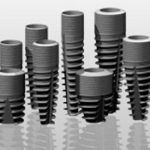
If you need dental implants to replace your missing teeth and for whatever reason do not want ‘metal’, you may consider ‘ceramic’ dental implants as an alternative. Ceramic dental implants, specifically known as zirconium or zirconia dental implants, are one of the newer forms of dental implants in the market as an alternative to titanium dental implants.
Zirconia was discovered in 1789 by the German chemist M. H. Klaproth but rediscovered only in the last decades because of its unique properties. Zirconia is a very hard material and has great strength. Because of its high bio-compatibility, it is used in medicine (auditory, finger and hip prostheses) and dentistry (posts, crown and bridge restorations, implants, implant abutments). Zirconia has similar color to teeth and is bio-compatible making it an alternative material in dentistry. Zirconia dental implants were approved by FDA in 2007 and have very limited scientific studies in United States. They have been used mostly in Europe with short term studies.
The decision to use ceramic or titanium dental implants should be fully discussed between patient and surgeon. On one hand, many patients may request ceramic dental implants because of its ‘metal-free’ properties. As we discussed, Zirconium implants are technically a metal. On the other hand, the surgeon must follow evidence-based dentistry to make proper recommendations for long term success and safety. The following facts should be considered in the decision process:
Digital work-up and computer-assisted implant dental implant planning allows safe and precise placement of dental implants. This in-turn eliminates complications associated with poor implant positioning and orientation. Using this approach, the entire surgical and restorative treatment plans are designed BEFORE any procedures are performed on patients. In-addition, patients can complete their treatment in less time and visits with great accuracy and remarkable results.






